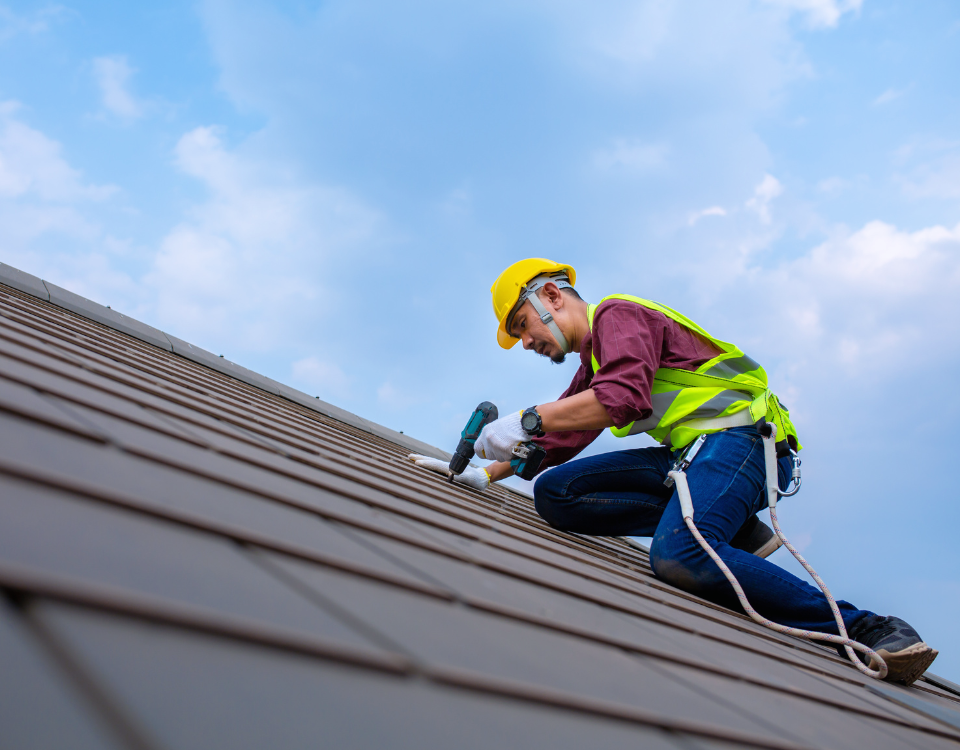
How to Safely Remove Snow from Your Roof
January 19, 2021
How the Roof Affects Your Chances of Selling Your Home
February 1, 2021Snowfall’s primary threat to your home is the development of ice dams that can secretly build up pools of water on your roofing systems. These usually form around clogged gutters or broken shingles, causing standing water to attract pests or corrode your roofing system’s material.
Besides pooling water, there’s also the danger of the pressure that snow can put on your roofing systems. Although snow is generally lighter than hail, leaving snow to accumulate over time can be problematic. It’s a similar effect of how driveways and parking curbs become troublesome to clear due to thick and hard-to-break piles of snow.
If you leave snow to build up unattended, one square-foot of snow with a one-inch depth weight close to a pound may develop, putting significant stress on your roof. This is why it’s necessary to understand how to approach roof snow removal to avoid these damages.
Gauging if you have to remove your roof snow
Roof snow removal is like clearing off the shed leaves of trees from last season. However, it’s much trickier to gauge whether your roof has too much snow than a pile of leaves. This is why you need to take the initiative to measure the depth of your roof snow if it’s already amounting to a dangerous number.
Using a ladder, inspect if your roof snow is already above six inches of snowfall deep. It’s a good benchmark to start unloading snow from your exteriors, even if there aren’t any signs yet of snow dams or clogged drains. Next is identifying what kind of snow you have on your roof. Like wet leaves, wet snow can weigh as much as six times more than dry snow. Keep this in mind when gauging if you can handle the snow removal yourself or if you need a specialist to handle it.
Choosing between shoveling or roof-raking for snow removal
The two most common methods of dealing with roof snow removal are shoveling or roof-raking. Roof-raking is the better option if you’re routinely keeping snow from building up on your roof. However, it becomes challenging to use for homes with two stories or more. If you’re dealing with heavy and wet snow, roof-raking will do little to solve your snowfall issues.
In contrast to a roof rake, a shovel is a more heavy-duty option to remove huge chunks of snow that are already hardened by wet snow. It’s also the right tool to break and clear off ice dams that are starting to form in your roof.
Scheduling the right time to remove your roof snow
Besides deciding on the right tool to remove your roof snow, you also need to consider the best time to do your scheduled clean-up. Tuning in to weather forecasts is an excellent way to know if it’s the ideal environmental conditions to remove your roof snow safely.
Consider if nighttime or daytime temperatures will remain, increase, or decrease after measuring your roof snow. If it stays above freezing level, the snow will likely melt on its own or at least drop in weight. However, you need to keep your rake and shovel ready if you’ll anticipate a forecast for intense snowfall followed by low temperature below freezing levels.
Conclusion
Dealing with snowfall is a lot trickier since you have to be conscious of the right weather conditions before making your next move. The consequences of missing out on your snow removal duties can lead to considerable damages to your roofing systems, from leaks to potential cave-ins. Thankfully, you can hire roofing specialists to patch your roof up good as new.
If you need roof repair in Charlotte, NC, we’re the right company to call. Charlotte Roofing handles all environmental concerns on your roof, like storm and hail damage. Call us today at (980) 223-0174 to learn more about our services!





